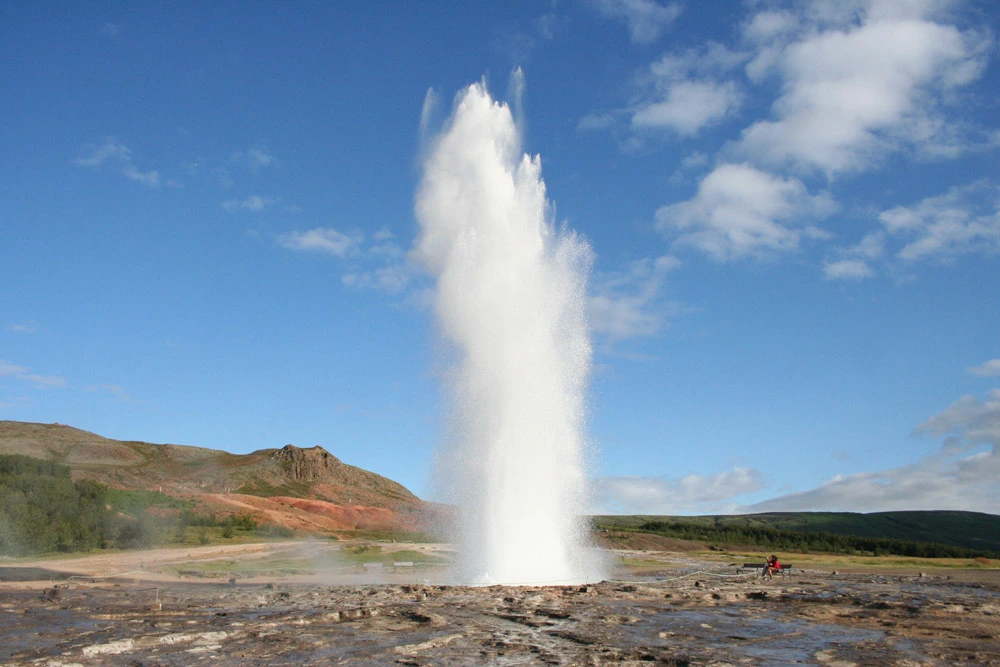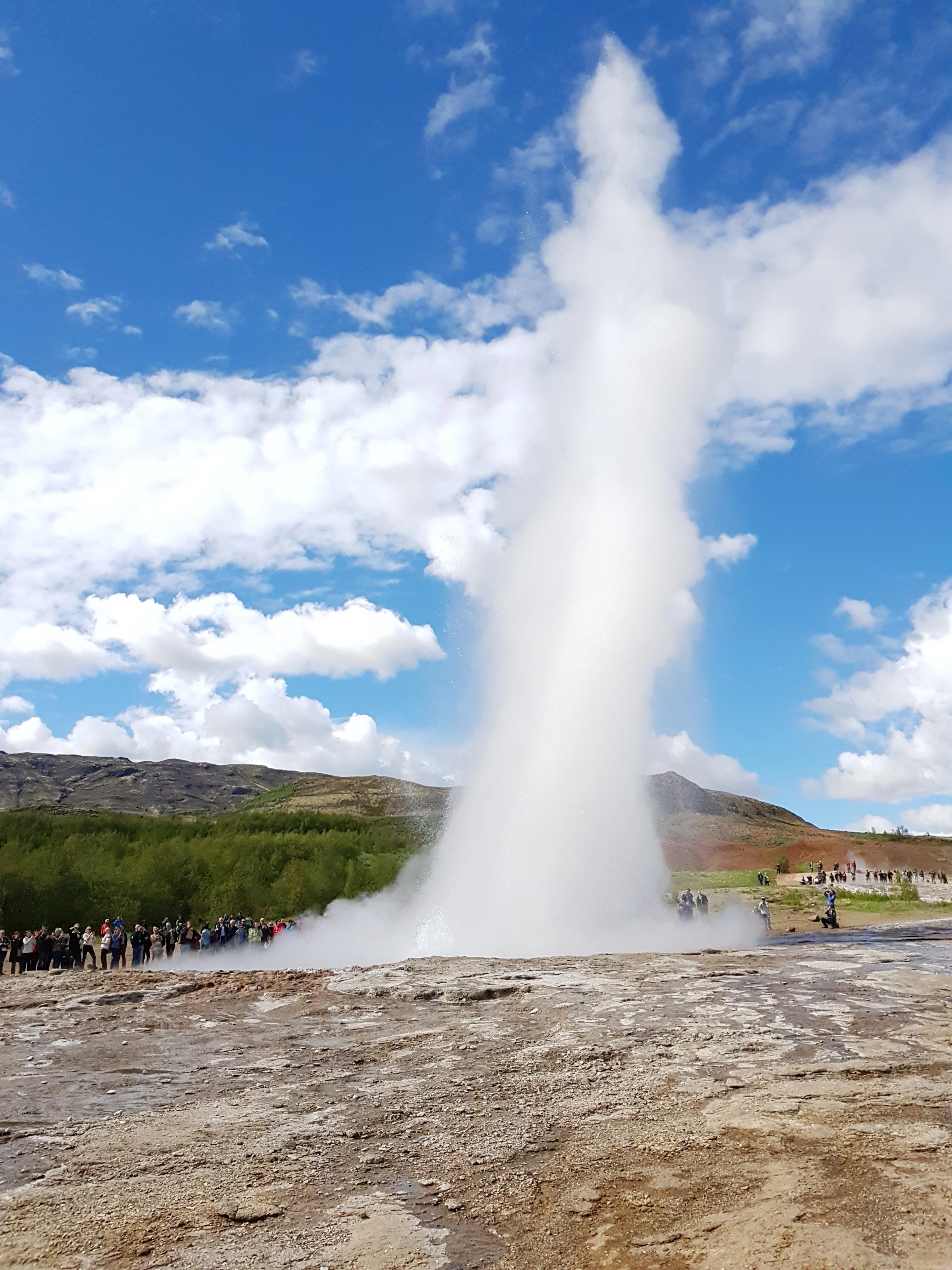




Geysir
Geysir is a famous geothermal area located in the Haukadalur Valley in southwestern Iceland. It is known for its hot springs and geysers, which are natural hot water fountains that erupt from the ground. The most famous geyser here is Strokkur, which erupts every few minutes, shooting hot water up to 30 meters (around 100 feet) into the air. This makes it a popular attraction for visitors. The area gets its name from the Great Geysir, which was one of the first geysers described in printed literature and gave its name to all other geysers around the world. Geysir itself is not as active today but can occasionally erupt after earthquakes or volcanic activity in the area. The geothermal activity is caused by underground volcanic heat heating groundwater until it bursts out as steam and water. Visitors to Geysir can also see bubbling mud pots and steaming vents, which showcase the intense geothermal activity beneath the Earth's surface. The landscape is unique, with colorful mineral deposits and steam creating an otherworldly atmosphere. It's a fascinating place to learn about geology and witness nature's power firsthand.
The Area
Top ways to experience
Geysir
What other travelers are saying about
Geysir
Good place to see geysers here. There is a big one 20m every 4-7 minutes and a small 1m almost continuous one. If you want to see many more and much bigger ones go to Yellowstone.
🌫️📸 Iconic spot but very touristy The geyser is impressive and definitely something to see at least once. The eruptions can reach a surprising height. But the area felt very crowded and touristy. I think geysers are more magical in quieter, less busy places. Still, it’s a famous site for a reason.
Crowded. But still a lot of fun! Parking was easy. Great gift shop with options to eat. The paths were super well maintained and accessible. The walk up the hill was great with a beautiful view, surrounded with lupin.
Nearby attractions to see
Frequently asked questions
What is Geysir?
Geysir is a famous geothermal hot spring located in the Haukadalur Valley of Iceland. It is known for its impressive eruptions, which can shoot boiling water up to 70 meters into the air.
How often does Geysir erupt?
Geysir itself has become less active in recent years and erupts infrequently. However, nearby Strokkur geyser erupts every 5 to 10 minutes, providing visitors with regular displays.
Why is Geysir important to Icelandic culture?
Geysir is significant as it was one of the first geysers known to Europeans and gave its name to all geysers worldwide. It symbolizes Iceland’s volcanic activity and natural energy.
When is the best time to visit Geysir?
The best time to visit Geysir is during the summer months (June to August) when the weather is milder and days are longer. However, winter visits offer a chance to see the geyser amid snow-covered landscapes.
Are there any safety precautions when visiting Geysir?
Yes, it's important to stay on marked paths and obey warning signs as temperatures around geysers can be dangerously high. Visitors should also be cautious of sudden eruptions from nearby hot springs like Strokkur.








